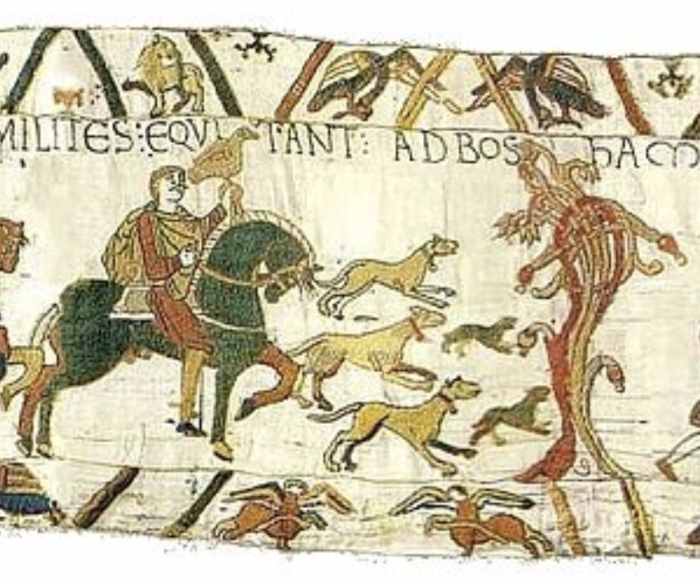
One of the most important pieces of fiber art ever made is the Bayeux Tapestry, the 11th-century cloth depiction of the Norman Conquest and the Battle of Hastings. And like the Tibetan Terrier that isn’t a terrier, the Bayeux Tapestry isn’t what you think it is if you went by the word “tapestry.”
Tapestry is defined as a woven design made on a loom where warp threads are hidden by the weft threads to form intricate designs, but the Bayeux Tapestry is actually a piece of embroidery, not a tapestry. What’s the difference? In embroidery, the design was formed by using a needle and thread and sewn onto the material using various stitches like straight, chain, running, and satin stitches, and this describes how the Bayeux was made.
You can imagine how much this has frustrated historians and needlework experts over decades and decades.
Sharp-eyed dog lovers will notice that the fabric depicts many dogs. Thirty five, to be exact. They may be interested to learn of an extremely rare 12th century dog collar found by archaeologists in Waterford City in the Republic of Ireland made of copper alloy that probably had leather backing when it was “new.” Art historians noticed that it resembled collar worn by dogs in the Bayeux Tapestry (though less ornate), dogs that were probably racing or hunting dogs such as a Greyhound. The collar is regarded as the oldest dog collar in Ireland.
Images shared under Public Domain license/Wikipedia

